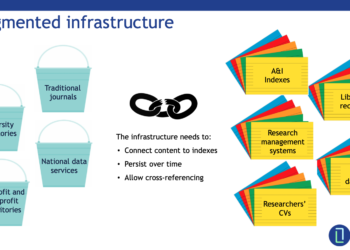Find below a remarkable assemblage of footage from a wide variety of recent advertisements from companies addressing current conditions and their commitment to their customers. The similarity between all of them is amazing, and speaks to a lack of imagination beyond a common set of clichés that corporations feel comfortable with. I suppose no one wants to make a mistake in these times where there’s so much time, attention, and pent up energy to be focused on missteps. But the same musical cues, the same visuals, the words of this onslaught of corporate “concern” all blur together and removes any meaning from the messages. Perhaps there’s something soothing in the blandness, given that we’ve all got enough on our plates right now, but I’m not sure this is the most effective spend of advertising dollars.
Discussion
9 Thoughts on "The Common (and Bland) Language of Pandemic Era Marketing"
Effective advertising often takes a long time to envision, create, and get client sign off at various stages along the way. Social distancing slows all of that down. So most of these ads rely upon stock footage on hand instead of being able to put together a crew to shoot new footage. The current ads are also cheap to produce.
You are right to question the value of such advertising, but probably less so to question its cost effectiveness. Most of the big advertisers running such ads have made a long term commitment to a particular volume of ads and in return are charged the best rates. Cutting advertising now may throw ads at other times of the year into a higher rate category. So the marginal cost of running those ads may not be that different from not running them.
It’s a masterstroke of the kind of consumer advertising that makes you feel like you’re imperfect, but if you buy the product you’ll be better. What could be more effective, when you’re freaked out and feeling powerless, than ads that make it look like everyone else is pulling together and making a difference and _being there_?
“Just buy the stuff, you can be part of this too.”
Hmmm, Is the same thing true in scholarly publishing with regards to all the post of “suddenly free access” to compilations of SARS-CoV-2 research? After all, We’re all in this together.
One of the feel good ads stands out in my mind, Pfizer’s full-throated ad in support of science as a process. It is a welcome counter to some of the babble floating around these days. If you haven’t seen it. https://www.youtube.com/watch?v=Xl0tEfLve1U
Gaslighting this article was posted 2 weeks ago. https://forge.medium.com/prepare-for-the-ultimate-gaslighting-6a8ce3f0a0e0
Unfortunately in higher ed there is no rug big enough to sweep this under.
Yep. After each one, I think just show me a blank screen with the amount of money you’ve given to x cause as telling us we’re in it together and missing folk but will be together again is superfluous.
Show me the money and I may well remember your service or product. Worst case, you’ve done some good. Job done.
The bane of causevertising. It’s safer, especially in these “uncertain” times. :-r


